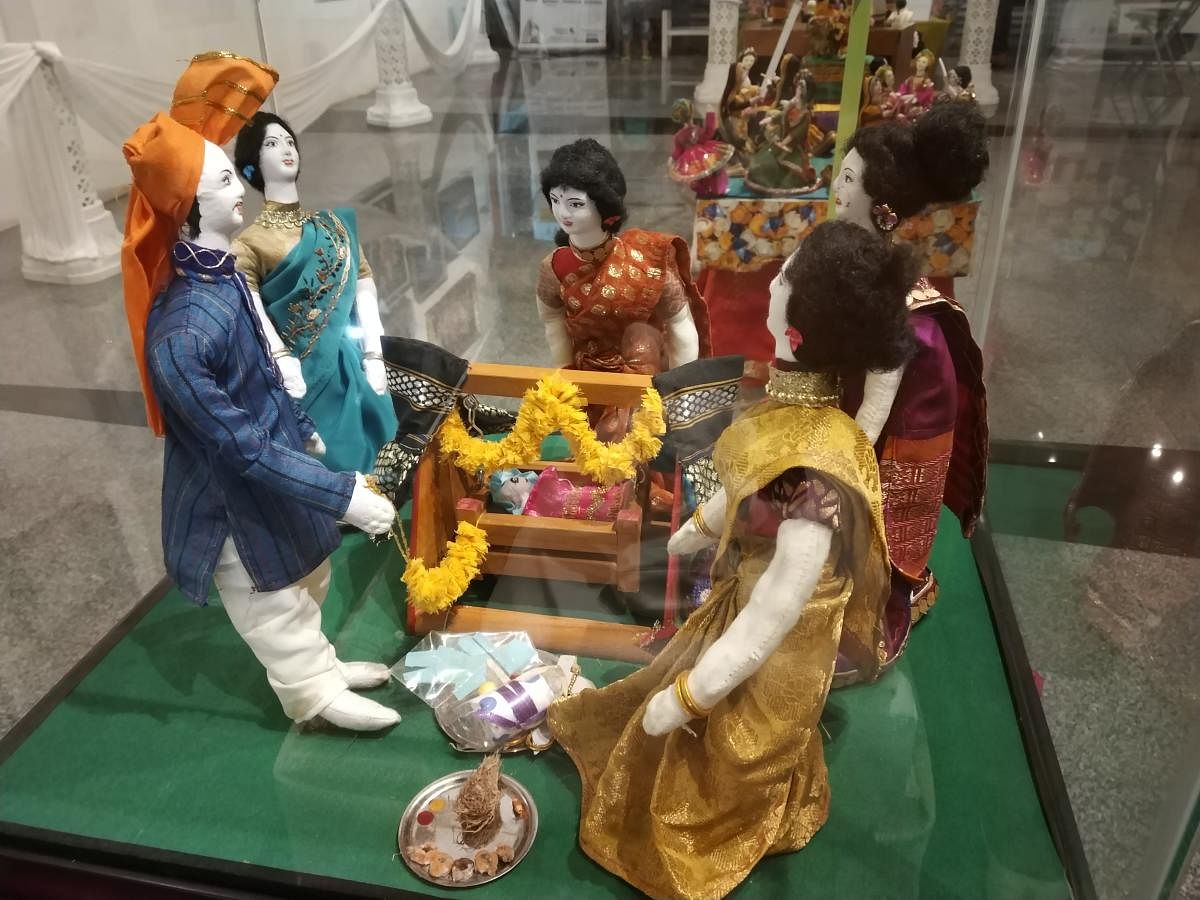

If you think dolls are for kids alone, think again, for Rina Soundalgekar, a resident of Belagavi, has created a whole new world out of them.
At a recent exhibition in Belagavi, Rina displayed her dolls, most of them inspired by Indian heritage and culture, individually and in thematic ensembles.
She has 3,000 of them, both collected and made, both traditional and foreign dolls. And her fascination for dolls has an Italian connection.
She, from Bihar, studied in Lady Shri Ram College for Women in Delhi and left for Itlay to study Masters in Italian. During her stay there, she noticed the ubiquitous show dolls at homes. She wanted to build a similar, but bigger, scene in India as the dolls here came with heritage.
Play on fashion
Back in India, even as she started working for an MNC on weekdays, she yearned to do something unique with her hobby on weekends.
When she moved to Belagavi after her marriage, in 2008, her yearning turned into reality. She first started teaching Italian. But later on, her focus shifted to making dolls.
Now, she hopes to open her own dolls museum in Kusmali, Belagavi.
Her collection has a name — Gudipedia, which comes from gudiya, Hindi for dolls, and pedia, which stems from her desire to have a vocabulary for dolls.
Rina’s dolls are made of cloth and stuffed with cotton. The drapes, jewellery, and props that give them a grand look are made at her workshop where she trains women from underprivileged background.
It takes three to four days to create a doll after it has been conceptualised and its fabrics are chosen.
This stage takes most of the time, she says, adding that it’s also one of the most satisfying part of her job.
You’ll find dolls in saree, lehenga-choli, kurtas etc. Indian festivals, rituals, folk art and even professions are the themes. She changes themes every month — for December, it’s picnics as that would attract kids.
The raw materials are procured locally. This is a challenge for her.
Ask and she’ll deliver
One can get customised ensembles by sending her requirement photos. The cost depends on the number of dolls and the props used, as also the availability of material and the labour that goes into it. In a customised ensemble fashioned after a naming ceremony, a client wanted a specific fabric for the saree and kurtas, Maharashtrian jewellery, and a certain look on the faces of the dolls. Rina scoured the local market for them.
Her attention for detail in getting the Kerala doll with the perfect Kasavu saree complete with the gold border and flowers in her hair, the tiny kurtas with angvastrams, the laces, hemlines, brocade-work; even the tiniest of turbans fold for Rajasthani dancers; the weapons in the hands of Goddess Durga are noticeable.
Rina has commissioned special display stands and revolving stands for the ease of display. These stands come in handy during exhibitions.
However, setting up an ensemble takes more time.
To highlight the benefits of a joint family, a doll ensemble, replete with a house, has a doll cooking, another taking care of the child in the crèche, another cleaning utensils, and others sowing seeds, going to the mandi or sitting in the courtyard.
Among them are ones from Vat Poornima Pooja, Mangalagouri, and Lavani and Hadaga, the dance forms which belong to Karnataka and Maharashtra regions. These display pieces, upon customisation, double up as gifts for weddings and other ceremonies.
Corporate houses, too, have bought her ensembles. Some brides-to-be get customised dolls clad in the replica of their bridal dress.